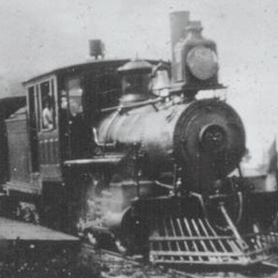The Coroner’s finding of “Accidental” as to the cause of death to Lizzie Buhler is most likely consistent with the evidence available to Coroner Brandon. However, with the benefit of hindsight, and without the attendant pressures associated with the actual investigation, we as readers could be forgiven if we have just a bit of cynicism or outright doubt to these findings.
As a former detective, and later in my career, a detective supervisor, I had the unfortunate experience of being involved in several dozen homicide investigations. As in the case with Lizzie Buhler, a murder investigation void of eyewitnesses or compelling physical evidence forces the investigative team to rely heavily on hypothesis and suppositions in order to craft a coherent and logical theory. The danger lies in trying to make the facts and circumstances fit the theories as opposed to allowing evolving circumstances and evidence to dictate the investigative flow and conclusions.
These temptations clearly tugged at the people involved in the Buhler investigation. We saw where the Pinkerton detective found a blood soaked iron bar in the horse shed belonging to Franz Abt. He is quoted as stating the bar is undoubtedly the instrument of death. Of course, we recall that on the night of her death, Lizzie was seen in the vicinity of Mr. Abt’s home, engaged in a conversation (perhaps tense) with John Lauby. It would seem to fit nicely with the Pinkerton detective’s assertion of murder.
But it was a classic case of the detective trying to make the evidence fit his theory and not allowing the evidence to lead him to the truth. We learn that there were four other similar blood soaked bars in the shed. Today’s investigators would have taken possession of all bars, had them photographed, documented and tested at the police laboratory and have blood comparisons made with that of Lizzie Buhler. Further serology testing showing various proteins, antigens and cell nuclei present in the blood would prove whether the blood was human or animal in origin. Photographs and diagrams of the shed, the animal carcass slaughtered by Abt, the positioning of the blood drip and the placement of the 5 bars would be performed. Franz Abt would give a detailed statement about all surrounding circumstances of the slaughter and hanging the carcass. Lastly, measurements of the iron bar(s) would be compared to the wound measurements on the scalp of Buhler, thereby fully and conclusively eliminating the bar spirited away by the Pinkerton official as a murder weapon.
The momentum gathered in a Buhler murder theory is tempered a good deal by the airtight alibi provided by Joseph Easer. The argument with his father is a very satisfactory explanation for his disappearance. Assuming no credibility gaps exist in the given time lines and Easer’s witnesses (Eddie Wyman, Michael Riley, and Mr. & Mrs. Sahr) prove to be honest and credible, earlier suspicions cast on Mr. Easer as a suspect now are fully receded. As are the milder suspicions of John Lauby, whose initial statements and verifications were enough to place him low on the radar in the first place.
These would not be viewed as setbacks or obstacles by law enforcement. In fact, it would help move the investigation forward, by eliminating what would ultimately prove to be dead ends, thereby conserving valuable man hours and resources. As the acquired information shifts the focus, the investigative adjustments continue to be made and follow the paths cut by the evidence, and not blazed by investigators.
Make no mistake, the evidence has only eliminated Easer, Lauby and the iron bar as murder suspects and weapons and not proven the death as accidental or suicidal to this point. So we now turn our attention to the train, as our 19th century investigators did.
According to the Times article chronicling the investigation, proponents of the murder theory point to how the engines “cowcatcher” would have thrown Lizzie’s body to the side of the tracks and not across. (A cowcatcher was an iron inverted V shaped frame mounted on the front engine of a train designed to push cattle or other large objects off the tracks to keep from getting caught under the train’s wheels.) However, we would have learned from interviewing railroad personnel and our own observations and witness accounts, that the trains also ran in reverse with “tenders” first. (A tender is a railroad car that served as a non passenger caboose.) As mentioned in the Times article, this could easily explain Lizzie’s body being thrown across and not to the side of the tracks. Today, a thorough and detailed forensic examination of all train tenders that ran within the accepted time frame of the investigation (11:30PM to 5:30AM) would be conducted. Minute hair, skin, scalp and blood fibers would most likely be found on the tender and tested for comparison to Ms. Buhler. Once identified, the remaining cars and their undercarriages would also be examined for evidence of the human tissue.
If we were to find this trace evidence on the tender and the subsequent cars, it would tell us that Lizzie was upright when first struck (comparing her height to the impact location on the tender.) Taking it further, it was determined the skull fracture was caused by the striking of Lizzie’s head to a railroad “tie” (the wooden planks laid transverse to the rails.) Rudimentary measurements of the wound and the tie would strengthen or weaken that theory and in all likelihood, definitively and conclusively solve that issue.
But assuming all that falls into place, we have scientifically proven what specifically caused her death, but we are no closer to a determination as to a cause of death by today’s law enforcement standards. Given the paucity of evidentiary facts we have, we still don’t know if this was accidental, suicidal or murder. There is nothing in this investigation that precludes the possibility of Ms. Buhler being pushed in front of the on coming train, either by an angry acquaintance or perhaps accosted by a psychotic stranger.
Nor can we definitively rule out the possibility of suicide, given the nature of her condition (pregnancy) in the vastly more rigid moral times Lizzie lived. Suicide would seem less likely in that she had already made plans and packed beforehand for her country trip with her employers for the following Monday. Suicidal people generally do not make temporary type arrangements. That said, we again have to keep the investigative open mind and not allow our theoretical conclusions to discount even remote possibilities until proven or disproven by evidence. Keep in mind; we do not know the nature of Lizzie’s conversation with John Lauby. Could it have involved pending parenthood? Is it possible Mr. Lauby impregnated Ms. Buhler and now refused to “step up” and “do the right thing?” Certainly, there is a small chance that such a circumstance could cause a young woman of that era to do something impulsive and drastic, so as not to bring scandal and shame to her family. This avenue, until absolutely proven otherwise, would remain an open investigative theory in today’s law enforcement circles.
And of course, we’re left with the third possibility and the one that the Buhler investigators settled upon. Accidental. I believe a thorough investigation was conducted by the authorities. I also believe that the times were truly more civilized and that something as brutal as a murder of a young woman was nearly unthinkable and easily dismissed. I also would not minimize the idea that the authorities, absent other evidence, were likely in those simpler times to assuage some of the family devastation by settling on the least painful conclusion, again, absent any other evidentiary circumstances.
I do find it a bit troubling, however, that Lizzie Buhler grew up a mere 300 feet from these same railroad tracks and in particular, was struck at a location just the equivalent of a football field from her childhood home. It would seem to me that someone that intimately familiar with the surroundings would be more acutely aware of the dangers, taking the necessary precautions and perhaps could discern something environmental signaling the approach of an oncoming train. (By observing little things those not familiar with the immediate area could not such as a humming of the rails, a slight change in a breeze pattern, a nearly imperceptible noise picked up on by someone who’s heard it nearly every day of her life.)
The Times article apparently echoes the official 1892 conclusion that Lizzie was alone in deep thought when “the reversed engine stole quickly and ALMOST noiselessly upon her.” I do not discount that theory. In fact, I believe it does carry a good deal of credence. However, today’s detective would need to verify beyond any doubt that Lizzie was in fact struck by the reverse engine (the tender) and that she was hit in the back, as alluded to in the article. The examination of the tender(s) discussed previously would provide the answer to the reversed engine strike. The Medical Examiners forensic report (autopsy) would likely provide us, not with absolute proof of being struck in the back by a tender, but a strong enough evidentiary case to draw a sound conclusion. In addition, a toxicology test to determine the presence of alcohol (and today, drugs) would be administered. Obviously, an indication of high blood alcohol content would strongly support the accident theory, accounting for diminished awareness.
The investigating authorities in 1892 did not have the incredible advantages enjoyed by today’s law enforcement. Manpower, sophisticated experience, technology, education, applicable scientific measures, etc., are all part and parcel of a death investigation today. And yet, even with all that at our disposal, we can be stymied in our investigation and sadly, never quite learn the truth about a specific incident.
In that case, rather than closing an investigation and drawing a conclusion based on what may be most likely, as in the 1892 mystery, barring compelling evidence, today’s detective squads would leave the investigation open. This is what’s known in NYPD parlance as a “CUPPI” (Cause Undetermined Pending Police Investigation).
Kenny O’Keefe was an NYPD officer for 20 years, having retired as a Detective Sergeant in 2003. He is currently the owner and president of Global Investigative Systems.




